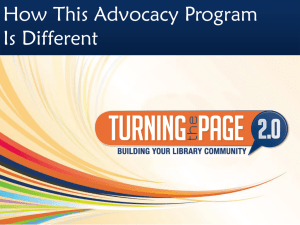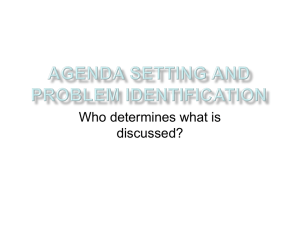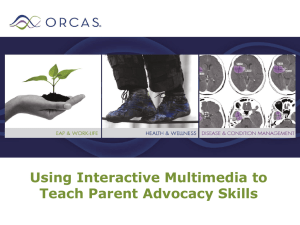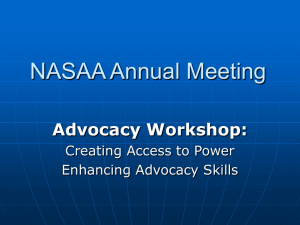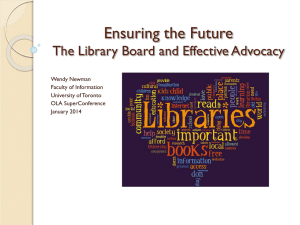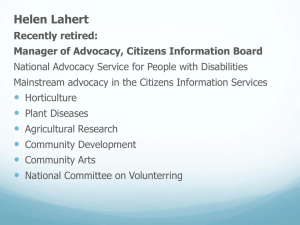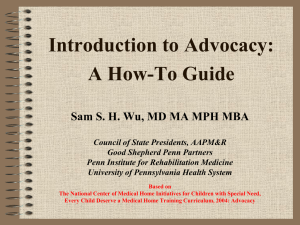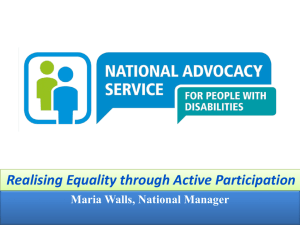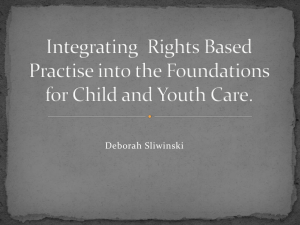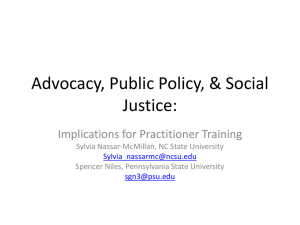From Social Service to Social Change
advertisement
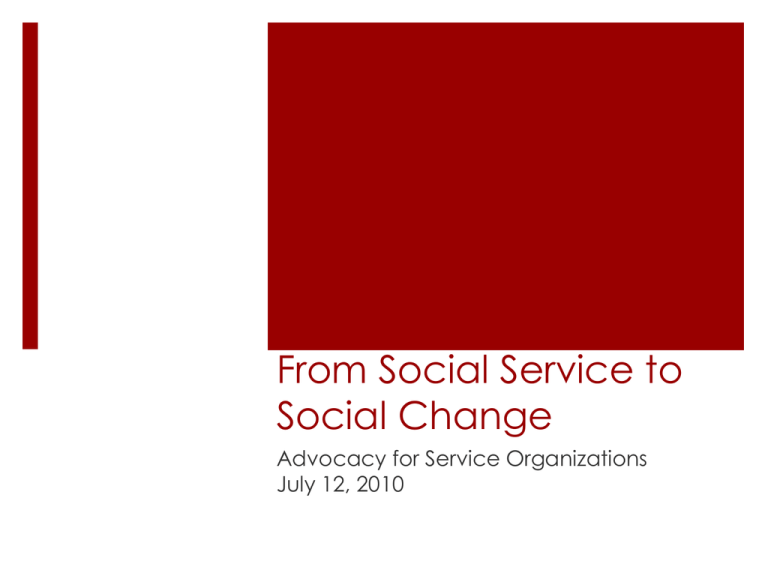
From Social Service to Social Change Advocacy for Service Organizations July 12, 2010 Outline of Workshop Explore why social service organizations should be engaged in advocacy and social change work Review best practices Conduct a self-assessment of your organization Panel Discussion with Latin American Community Center, TODEC, and MAAC Project Why should service providers engage in advocacy? To protect their own funding To fulfill their missions (the limits of the direct service model) Because service providers have valuable resources, networks, and credibility in the community that can be leveraged for social change State Budgets in Crisis 48 states faced $200 billion in shortfalls in 2010 45 states cut public services (for health, elderly and the disabled, K–12, etc.) $180 billion in shortfalls projected for 2011 California—$20 billion annual shortfall projected through 2014 Sources: The Pew Center on the States, “State of the States 2010: How the Recession Might Change States,” http://www.pewcenteronthestates.org/report_detail.aspx?id=57200 (accessed July 2, 2010) and Center on Budget and Policy Priorities, “The State Budget Crisis and the Economy,” http://www.cbpp.org/slideshows/?fa=stateFiscalCrisis (accessed July 2, 2010). . Social Service vs. Social Change Social Service: Social Change: Individual Collective Adaptive Transformational Clients Citizens The California Affiliate Network 57 service-provider organizations 7,800 employees $700 million collective budget 1.1 million clients (Population of CA≈37 million) Presence in 51 of 120 legislative districts Best Practices Organizational commitment to advocacy and social change Client engagement and leadership development Integration of advocacy/civic engagement activities into programs and services Technological capacity Participation in coalitions/networks Organizational commitment Executive director and board engaged in advocacy Advocacy is part of mission statement Designated organizer/advocacy staff person Advocacy included in all job descriptions Staff provided with ongoing training Client Engagement Clients mobilized regularly for advocacy activities Integration Systems of reciprocity Emphasis on client leadership development (training, leadership teams/roles, etc.) Mechanisms to engage clients in strategy/decision-making Lone Ranger Some staff/mgt and client involvement Integration El Concilio/NCLR Health Reform Campaign—A Model for Integration 3,677 health reform postcards 2,861 phone calls to members of Congress Engaged clients through health access transportation program, maternity advocates, a mental health clinic, a health education program, and Promotores Monthly staff call-in days Entire staff engaged in effort Reciprocity “…Reciprocity may involve the mutual exchange of services: the community member receives a service and in return participates in voluntary work with the organization….Reciprocity demonstrates mutual dependence between the organization and the community that participates in its services…Power relations potentially shift through the process of valuing the contributions of community members and demonstrating mutual reliance.” Source: Building Movement Project “Making Social Change: Case Studies of Nonprofit Service Providers,” http://www.buildingmovement.org/news/entry/108 (accessed July 2, 2010). Best Practices—Technology Web-based data base—list building, client tracking, E-activism o Democracy in Action (www.democracyinaction.org) o Capwiz (www.capwiz.com) o Convio (www.convio.com) o PowerBase (Progressive Technology Project www.progressivetech.org) Social media (Facebook, Twitter, etc.) “Three-Dimensional” Capacity-Building Executive Director Staff Clients/Constituents “Three-Dimensional” Capacity-Building Allies Allies Allies Your Organi zation Allies Allies Coalitions and Networks— NCLR California Affiliate Network 57 Affiliates throughout the state Affiliate-led housing, health, and education committees Statewide lobby day (2010: 266 people, 110 legislative visits) Partnerships with other statewide organizations and coalitions Advocacy Capacity SelfAssessment Panel Discussion Ana Velazquez, Latin American Community Center, Wilmington, DE Luz Maria Gallegos, TODEC Legal Center, Montebello, CA Karina Serrano and Karim Bouris, MAAC Project, San Diego, CA Resources NCLR, www.nclr.org Building Movement Project, www.buildingmovement.org The California Endowment, www.calendow.org Alliance for Justice, www.ajf.org


